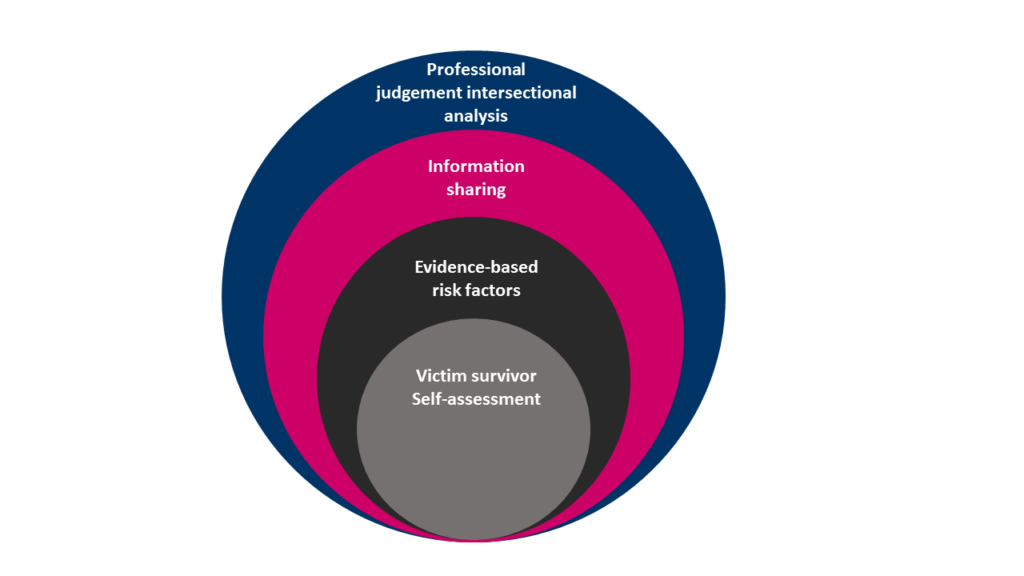To undertake a family violence risk assessment, you need to participate in training in the use of the Brief or Intermediate Risk Assessment tool. This is part of the MARAM training being made available in Victoria.
Below is some introductory information about family violence risk assessment, and links to the tools.
Levels of family violence risk
Family violence risk assessed by MARAM is risk of lethality.
The MARAM framework recognises three levels of family violence risk, ‘At Risk’, ‘Elevated Risk’ and ‘Serious Risk’[1]. The table below provides guidance on identifying the level of risk a victim survivor is experiencing and direction regarding action to take at each risk level.
| Risk Level | Description |
| At risk |
|
| Elevated Risk |
|
| Serious Risk |
|
| Serious risk and requires immediate protection | In addition to serious risk, as outlined above:
|
Perpetrator drug and / or alcohol misuse is one of the identified as increased risk of the victim being killed or almost killed. When a client in an AOD service is identified as a perpetrator of family violence, it is likely to be classified as elevated risk or serious risk.
Structured Professional Judgement
Structured Professional Judgement is the practice model that underpins risk assessment to support you to determine the level of risk and inform risk management responses:

Your analysis of the four elements of the model and application of your professional experience, skills and knowledge are the process by which you determine the level of risk.
MARAM Family Violence Risk Assessment Tools
The questions in the MARAM Family Violence Risk Assessment Tool are designed to support victim survivors to tell you about their experience of family violence, to inform you about the current level of risk and history of violence. Depending on your job role, once you have identified family violence risk, it is likely that as an AOD clinician, you are able to assess the level of family violence risk using the MARAM Brief and/or Intermediate Assessment Tool.
MARAM Responsibility 3: Practice Guide Intermediate Risk Assessment Practice Guide Intermediate Risk Assessment provides background information on how to assess family violence risk. The Intermediate Assessment Tool within a table of practice guidance about each question to support response can be found here.
MARAM assessment tools include:
- The Brief Assessment Tool reflecting high-risk factors only, to be used in time-critical interventions.
- The Intermediate Assessment Tool includes a broader range of evidence based risk factors experienced by adults and questions about risk to children
- The Child Victim Survivor Assessment Tool includes a summary of adult risk factors, questions about a child’s risk and a separate set of questions for direct assessment of an older child or young person.
References
[1] Source: MARAM Practice Guide Responsibility 3: Intermediate Risk Assessment
